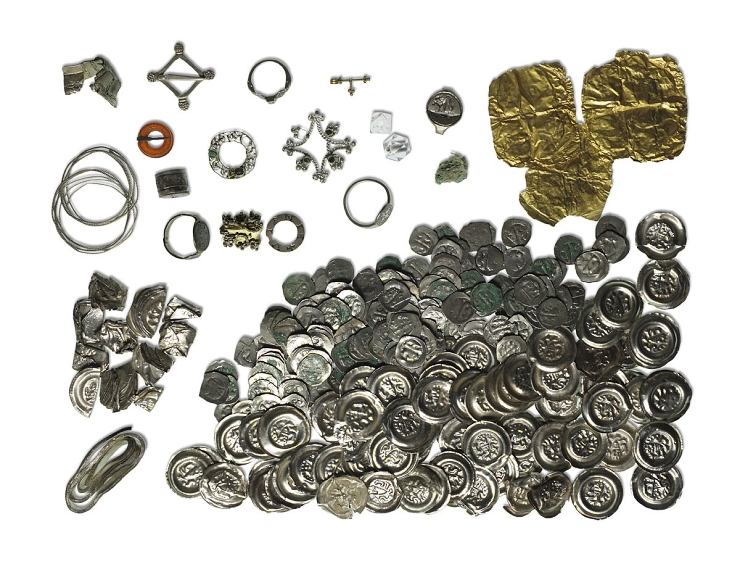10 kilo? No to uz je poklad jak má být 😃😃😃
23 Aug 1997 Treasure of Fuchsenhof
Categories: Minting - Numismatics , Treasures , Calendar , Nálezy nejenom s detektorem v západní Evropě

He searched the field for weapons from World War II and discovered a depot that intrigued historians and numismatists from all over Europe. The Fuchsenhof treasure was in a metal container. It contained thousands of coins, jewels and two silver bars.
The treasure was found by a prospector in 1997 near Fuchsenhof, a farmstead located about fifteen kilometres from the Czech-Austrian border.
We also wrote about the treasure here: Treasure from Fuchsenhof
The metal container was partly covered by a piece of cloth. Inside were six thousand coins, which experts have assigned to dozens of European mints from London to the Crusader Akon in Palestine. The hoard also contained several hundred broken coins and scrolls, as well as about 300 highly valuable decorative items such as rings, buckles, belt ornaments and fittings.
The treasure also included destroyed pieces to be melted down and raw materials for jewellery making. Specifically, silver bars and wires, gold leaf and precious stones. According to experts, the treasure was hidden during the turbulent period between 1276 and 1278, when Upper Austria was occupied by the armies of King Rudolf of Habsburg.
Ten kilograms of gold, silver, jewellery and various coins from the second half of the 13th century have been permanently displayed in the Linz Castle Museum. The depot has been examined by experts for several years. They found that the Czech kingdom of Premysl Otakar II had numerous trade relations with Italian Venice.
From this city, goldsmiths and jewellery makers came to Bohemia to fulfil special ordersand the second most influential man in the kingdom, the Bishop of Olomouc. Venice thus grew rich thanks to the supply of Bohemian silver, mainly from the mines of Jihlava.
The search for the owners of the treasure ended in 2004. A number of clues pointed to Venetian goldsmiths who worked for the Czech king at the time, as Prague was the onlyCentral European city that could participate to a greater extent in the so-called commercial revolution of the thirteenth century.
Experts from Austria, Germany, the Czech Republic and Great Britain participated in the research.
Sources: Lidove noviny, www.hobby-detecting.com, www.academia.edu
The article is included in categories:



